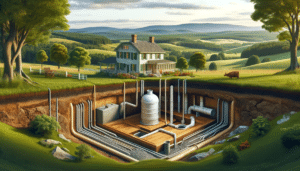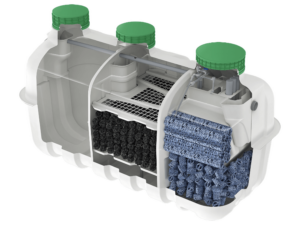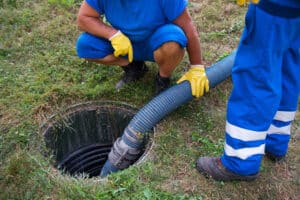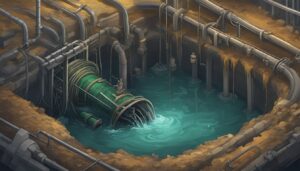There are several private wastewater systems, but one of the most misunderstood options is a cesspool. You may have heard the term “cesspit” or “cesspool,” but you may not know what this system is or how it works. Because cesspools have been around since the invention of plumbing, the word “cesspool” tends to be used interchangeably by homeowners to describe any private wastewater system.
Let’s look at what a cesspool really is, and why they aren’t common today.
What is a Cesspool?
Cesspools, sometimes called cesspits or sump pits, are buried enclosures that store a home’s effluent and wastewater to be pumped later on. Unlike other home systems, cesspools do not treat wastewater or waste. Instead, waste sits in the chamber until a pumping company arrives to pump it out.
The underground chamber can be accessed through a manhole. But because these pits contain a cocktail of chemicals and waste, they may contain hazardous materials. Homeowners should never attempt to open a cesspool without the appropriate protection and training.
How Do Cesspools Work?
Cesspools are essentially just holes in the ground lined with permeable materials designed for waste collection and dissipation of liquids into the surrounding soil.
Bathtubs, showers, toilets, dishwashers, sinks and washing machines all drain into the cesspool.
Because cesspools do not separate solids from liquids like a septic system does, they fill up relatively quickly and need to be cleaned out regularly. How often it needs to be pumped depends on the size of the tank, how many people live in the home and how frequently the home’s systems are used.
The waste that’s collected from the tank is taken to a waste treatment plant, dumped into an approved landfill, or sent to an independent sewage treatment company according to local laws.
Why Cesspools Aren’t Common Today
Cesspools are designed to be temporary holding tanks for waste. They don’t pre-treat the wastewater, so waste is sent directly to the pit, making them less efficient than other systems.
In addition, cesspools have no way to separate solids from liquids, which means that they pollute groundwater relatively easily.
Because they fill up so quickly, cesspools have to be pumped regularly. Because of the poor design of cesspools, the biggest issue the soil surrounding the cesspool becoming oversaturated and not allowing the dissipation of liquid out of the system. This means that older the cesspools require more frequent pumping.
If a cesspool is not pumped regularly, it may overflow, and waste may back up into the home’s pipes. Frequent pumping can be cost prohibitive, which makes these systems even less desirable.
At some point, the amount of pumping required makes it necessary to simply close up the existing cesspool and install a new one in a different area of the property.
For all of these reasons, cesspools aren’t common today. However, if you purchase an older home (built prior to the 1970s), you may find it has a cesspool. These systems can last 40 years before needing to be replaced. However, recent legislation, particularly in New York, is beginning to require the sellers of such homes to upgrade these systems to advanced, nitrogen reducing septic systems at the time of a sale.
Signs of a Failing Cesspool
It’s best to seek the help of a professional to determine whether your cesspool is working properly. However, there are some telltale signs that the system may be failing.
- The pit is full and can no longer hold wastewater.
- The cesspool has contaminated a drinking water well, stream or wetland.
- Wastewater is backing up into the home.
If a cesspool is failing, it may need to be replaced with a modern system. Repairs may be possible, but replacement is inevitable. Modern systems offer more efficiency and less risk of polluting groundwater.
And with the current grant and rebate programs available, you may even be able to upgrade your system at no cost!










